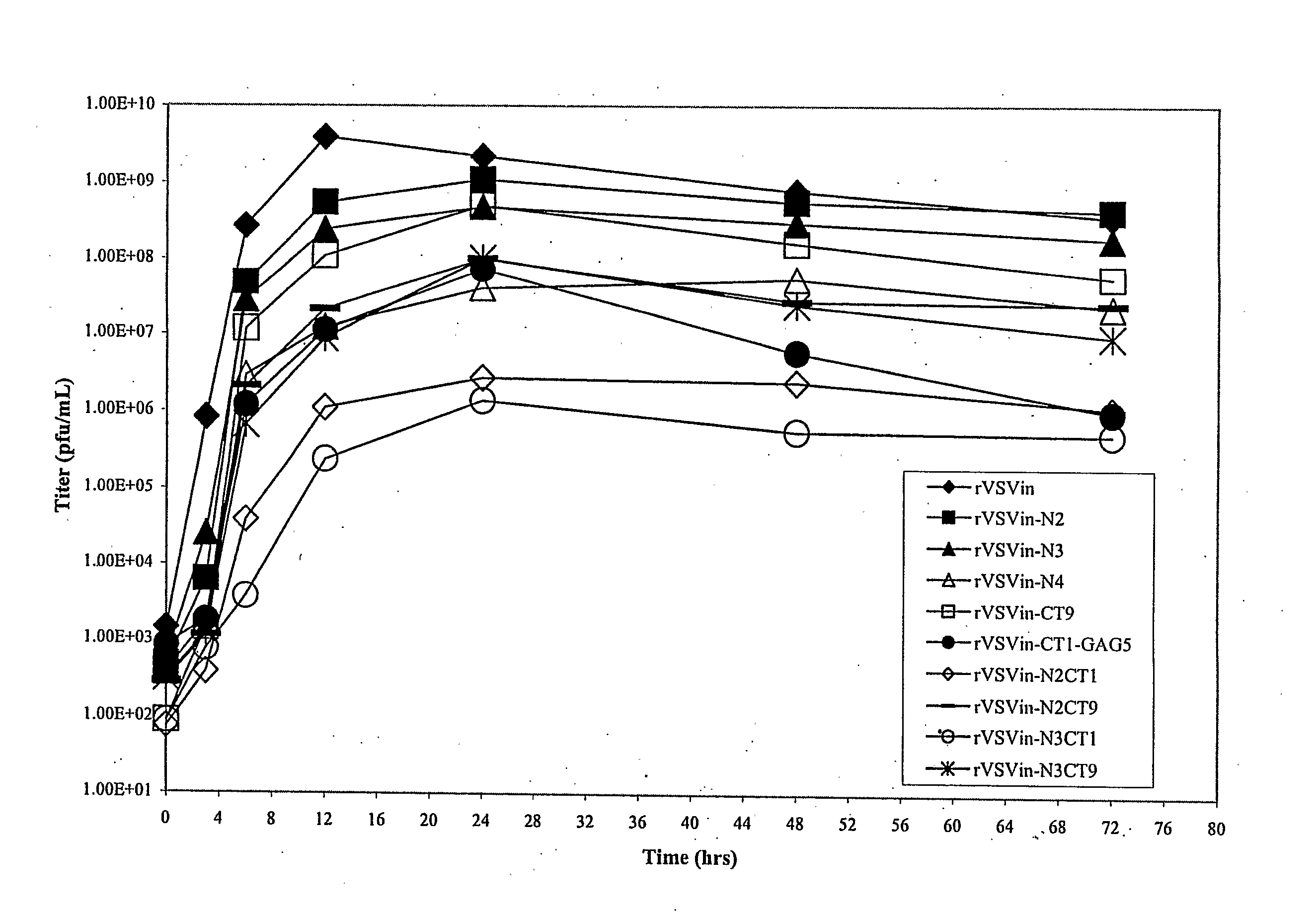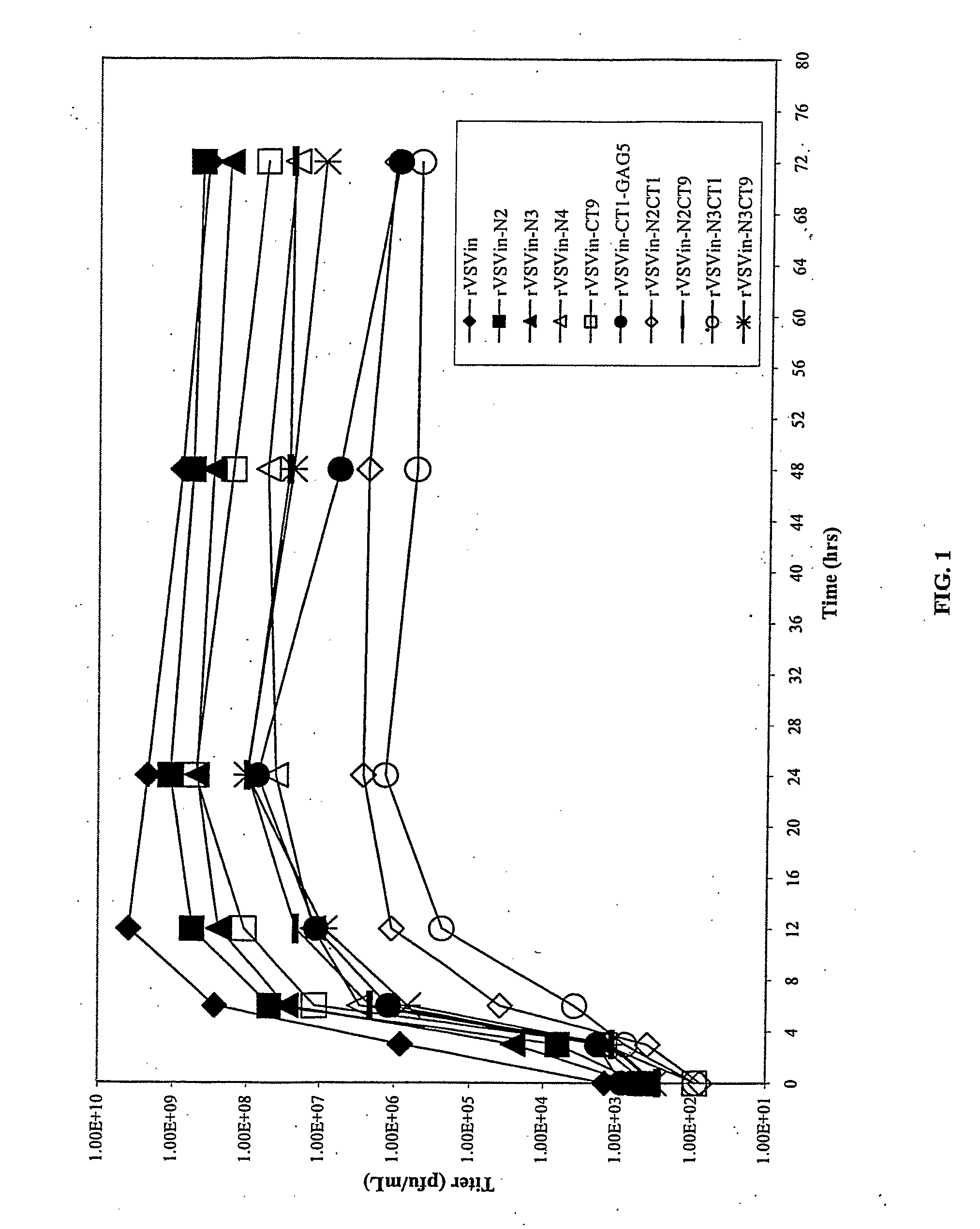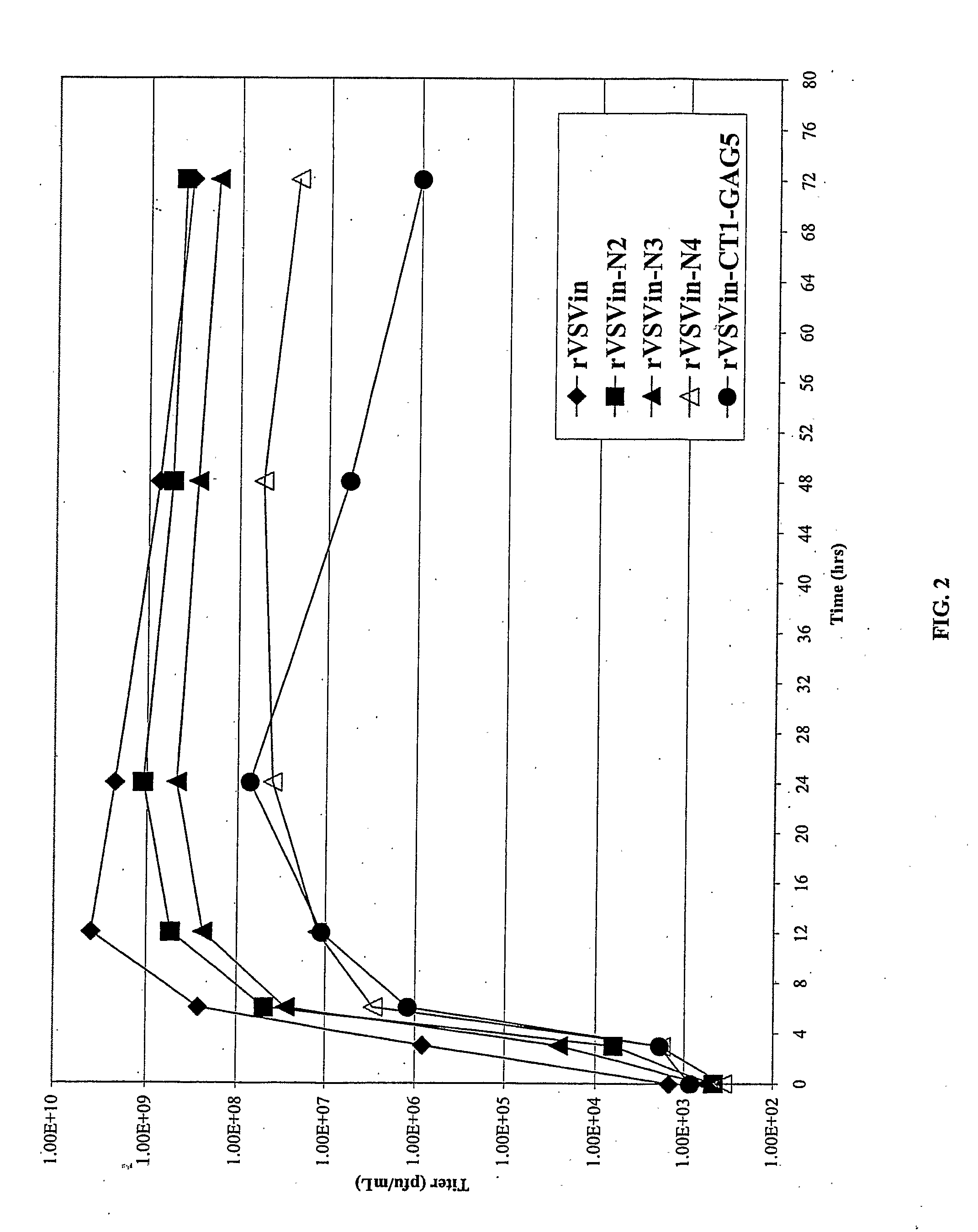Synergistic Attenuation of Vesicular Stomatitis Virus, Vectors Thereof and Immunogenic Compositions Thereof
a technology of vesicular stomatitis virus and attenuation, applied in the field of virology, microbiology, infectious diseases and immunology, can solve the problems of unacceptable residual virulence levels
- Summary
- Abstract
- Description
- Claims
- Application Information
AI Technical Summary
Benefits of technology
Problems solved by technology
Method used
Image
Examples
example 1
Materials and Methods
VSV G Protein Cytoplasmic Tail Mutants
[0110] The methods used for the generation of G protein cytoplasmic tail mutants of the present invention are known in the art and described in detail by Schnell et al., (1998). These G protein mutants retained either a single amino acid (G(ct-1)) or nine amino acids (G(ct-9)) in the G cytoplasmic tail domain compared to the twenty-nine amino acid cytoplasmic tail domain of wild type VSV Indiana strain (SEQ ID NO:1). The cytoplasmic tail truncations were generated by moving the translation stop codon either 60 nucleotides or 84 nucleotides (i.e., nine amino acid cytoplasmic tail and one amino acid cytoplasmic tail, respectively) upstream of the authentic stop codon and resulting in truncation of the G protein.
VSV N Gene Shuffled Mutants
[0111] The N gene translocation mutants (N shuffles) were generated by repositioning the N gene as either the second, third or fourth gene from the 3′ end of the virus genome. For exampl...
example 2
Characterization of VSV Mutants
[0185] Substantial differences between the plaque sizes of the combined two mutation class VSV vectors described in Example 1 (N shuffled / G protein ct truncation) versus single class mutation VSV vectors were observed (Table 5). Typically, single class mutation VSV vectors formed plaques of countable size in a twenty-four hour plaque assay, while some of the N shuffled / G protein ct truncation vectors required three to four days to form equivalent sized plaques. The relative differences in plaque size for the VSV vectors also paralleled relative differences observed during growth kinetics studies in cell culture (FIG. 1 through FIG. 3).
TABLE 5RELATIVE PLAQUE SIZE OF VSV VECTORSPlaque Size at 48 hoursVSV Vectorpost infection3′-NPMGL-5′3′-PMNGL-5′3′-NPMG(ct−1)L-5′3′-PNMG(ct−1)L-5′3′-PMNG(ct−1)L-5′
example 3
VSV Neurovirulence Studies
[0186] The synergistic attenuation of VSV comprising a combination of two or more mutation classes, relative to the single class VSV mutant vectors, was evaluated in a series of mouse, ferret and monkey neurovirulence studies, the methods of which are described in Example 1. Mice are highly permissive for VSV replication and this property allows them to be used to discriminate different levels of virus growth and attenuation. A distinct gradient of pathogenicity / attenuation was observed in mice for the different VSV vectors (Table 6 and Table 7). For example, the LD50 in mice inoculated intracranially with 3′-NPMGL-5′, 3′-NPMG(ct-1)L-5′, 3′-PNMG(ct-1)L-5′ or 3′-PMNG(ct-1)L-5′ (Table 6), indicated the following relative attenuation gradient: 3′-PMNG(ct-1)L-5′ (LD50=2×105)>3′-PNMG(ct-1)L-5′ (LD50=1×104)>3′-NPMG(ct-1)L-5′ (LD50=14.5)>3′-NPMGL-5′ (LD50=3.2).
TABLE 6NUMBER OF MICE DEAD OR PARALYZEDIC Dose (pfu)Vector1101001000100001000003′-NPMG(ct-1)L-5′ND3 Di...
PUM
| Property | Measurement | Unit |
|---|---|---|
| permissive temperature | aaaaa | aaaaa |
| non-permissive temperatures | aaaaa | aaaaa |
| non-permissive temperatures | aaaaa | aaaaa |
Abstract
Description
Claims
Application Information
 Login to View More
Login to View More - R&D
- Intellectual Property
- Life Sciences
- Materials
- Tech Scout
- Unparalleled Data Quality
- Higher Quality Content
- 60% Fewer Hallucinations
Browse by: Latest US Patents, China's latest patents, Technical Efficacy Thesaurus, Application Domain, Technology Topic, Popular Technical Reports.
© 2025 PatSnap. All rights reserved.Legal|Privacy policy|Modern Slavery Act Transparency Statement|Sitemap|About US| Contact US: help@patsnap.com



